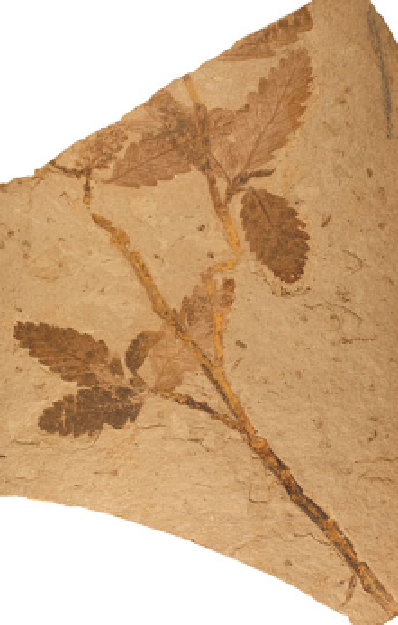Geoscience Reference
In-Depth Information
found today in the Pacific or Rocky
Mountain regions are common at Florissant,
such as
Mahonia
, the Oregon grape
(Berberidaceae),
Cercocarpus
, the moun-
tain mahogany (Rosaceae,
228
), and other,
often prickly, members of the Rosaceae such
as
Crataegus
(hawthorn),
Rubus
(rasp-
berry),
Prunus
(cherry, plum),
Amelanchier
(serviceberry), and
Rosa
(rose). Broad-
leaved trees are common, with oaks
(
Quercus
) and beeches (both Fagaceae),
birches (the extinct
Astercarpinus
fruit and
Paracarpinus
leaf, Betulaceae), and walnuts
( Juglandaceae, e.g.
Carya
, the hickory, and
Juglans
, walnut). One of the commonest
plants at Florissant is the extinct beech
Fagopsis
(
229
). Enough organs have been
found in connection to link confidently
foliage, pollen, flowers and fruits, but not yet
wood, although
Chadronoxylon
might be a
contender. Liking moist habitats, it is
unsurprising that poplars (
Populus
,
230
) are
common but, strangely,
Salix
(willow, sallow)
is rather rare.
229
230
229 Twig of the extinct genus Fagopsis
Fagaceae, one of the commonest trees at
Florissant NHM. Length 123 mm 4.8 in.
230 Leaves of Populus crassaSalicacaeae,
one of the commonest trees at Florissant
NHM. Leaves approximately 80100 mm
3.13.9 in long.







Search WWH ::

Custom Search